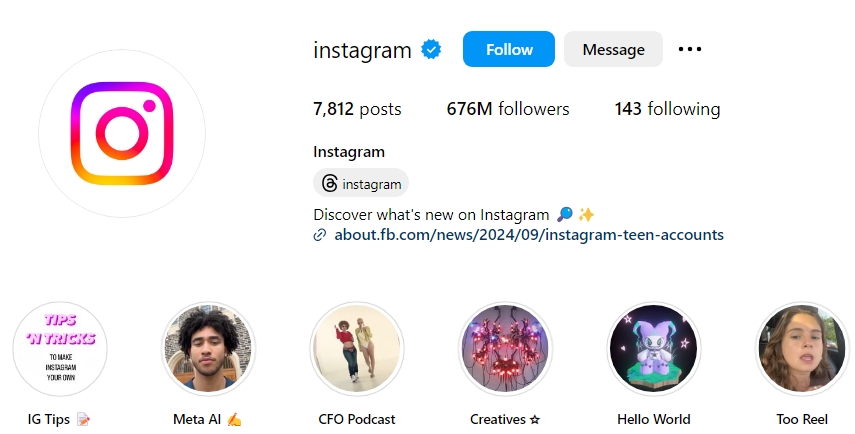
Instagram has officially launched its new Teen Accounts feature, marking one of Meta’s biggest efforts to date to bolster safety for its youngest users online.
The new accounts, automatically assigned to any new users under the age of 18, place limits on what users can see, who can message and interact with them, and enable parents to exercise more control over their teens’ social media use.
Meta promised the rollout of additional safety features earlier this year after it came under fire in both the United States and Europe over allegations that its apps are addictive and have fueled a youth mental health crisis.
In October, more than 40 states filed a lawsuit in federal court claiming that the social media company profited from the advertising revenue gained by intentionally designing features on Instagram and Facebook to maximize the time teens and children spent on the platforms.
The content that’s viewable via the Teen Account is filtered by the most stringent settings, hiding content classified as “sensitive” even when shared by someone they follow. The accounts also notify the app not to suggest anything marked as potentially sensitive to these accounts in the first place. This applies not only to traditional posts but Reels and suggested accounts as well.
Using these tools, parents can see the topics their teens are looking at and get a look at who they are chatting with. While parents can’t read their children’s messages or see which posts they view directly, they can see who their teen has messaged in the past seven days and what topics they have opted to see more of on their feeds.
A few more of these parental tools allow users to limit the amount of time spent on Instagram. Some of these include:
- Time limit reminders: Teens will get notifications telling them to leave the app after 60 minutes each day.
- Sleep mode enabled: Sleep mode will be turned on between 10 PM and 7 AM, which will mute notifications overnight and send auto-replies to DMs.
- Set total daily time limits for teens’ Instagram usage: Parents can decide how much time their teen can spend on Instagram each day. Once a teen hits that limit, they’ll no longer be able to access the app.
Users under 16 will need parental consent to modify the default settings, while those aged 16 and 17 can disable these settings without parental approval.
Parental controls are a major part of the new Teen Accounts, as Instagram said its inspiration for the new features came from feedback on parents’ most common concerns.
Parents can set up parental supervision on their teens’ accounts, which enables them to approve and deny their teens’ requests to change settings or allow teens to manage their settings themselves and gives parents access to optional monitoring tools
The feature is expected to begin rolling out within 60 days in the UK, US, Canada, and Australia, with other countries receiving it by January.
Meta also announced that teen accounts will be introduced to its other social media platforms in 2025.
How will Instagram enforce Teen Accounts?
Instagram also has plans to enforce these age restrictions even when teens attempt to circumvent them by lying about their birth dates or attempting to gain parental control over each other’s accounts.
Account creators will be asked to verify their age using ID, and additional verification steps will be added. Since 2022, teens have been required to prove their age with a video selfie or ID check if they attempt to change their birthday from under the age of 18 to over 18. If a teen attempts to update their birthday from a younger age to an older age, the platform requires proof of age with an ID check.
Further steps will include using information about a teen’s original account to prevent them from using a new account with an adult age or preventing teens from linking their accounts to accounts with adult ages.
Likewise, Instagram is working on an AI model that can detect if someone is likely to be underage even if they put an adult birthday in at the account signup. By using clues like a review of the accounts and types of content an account is interacting with, the AI tech, which has yet to be rolled out, may automatically switch an account over to a teen version, though account holders will be able to change this setting.







